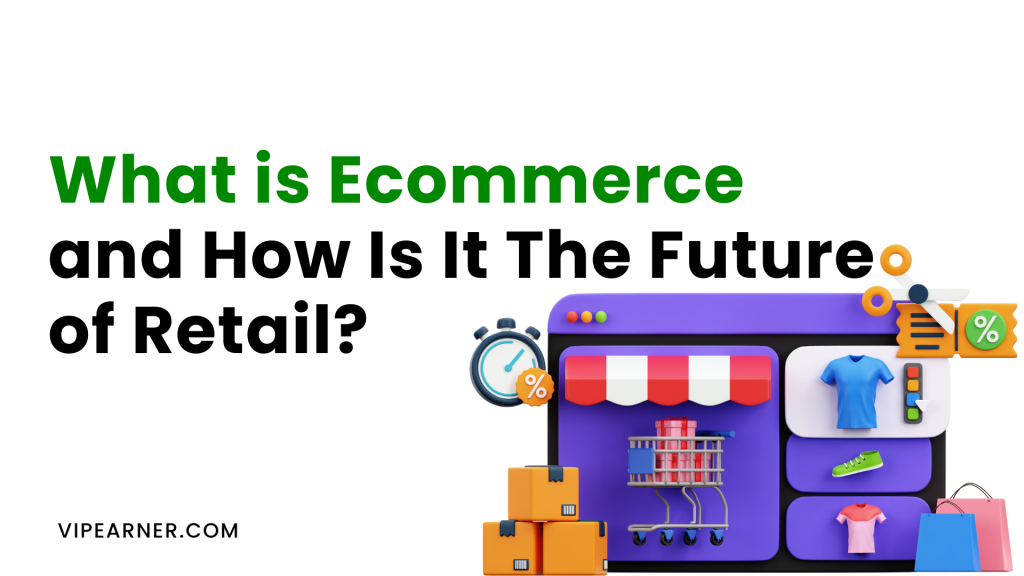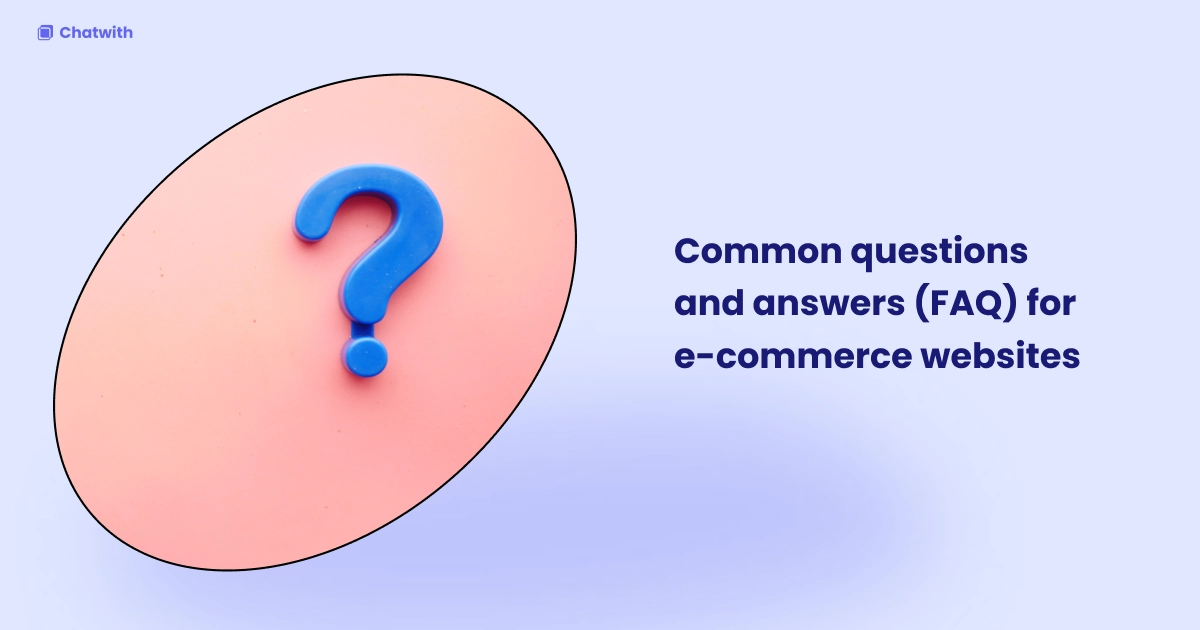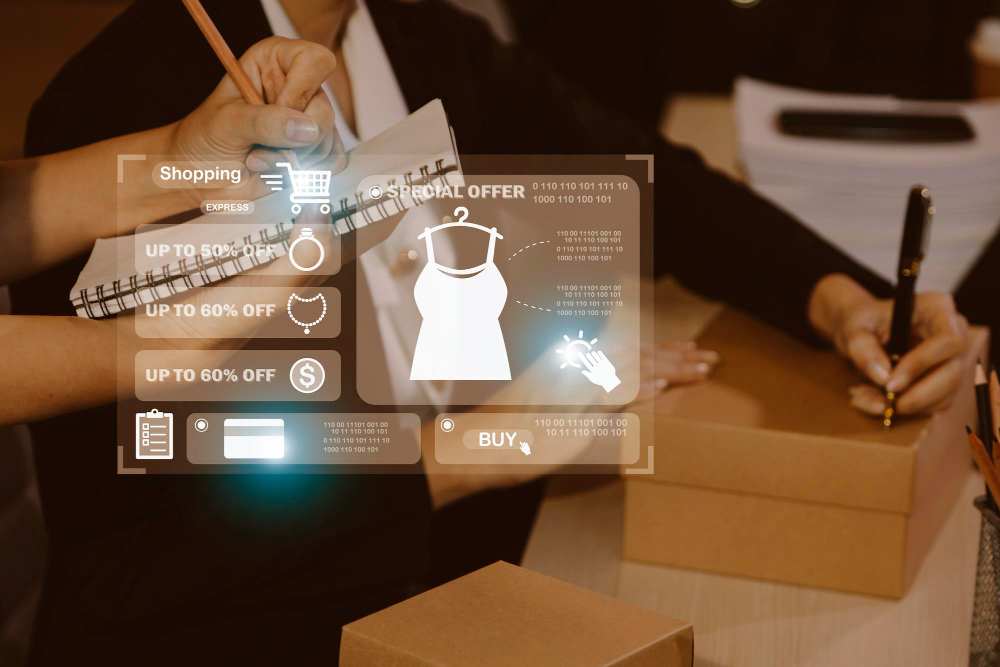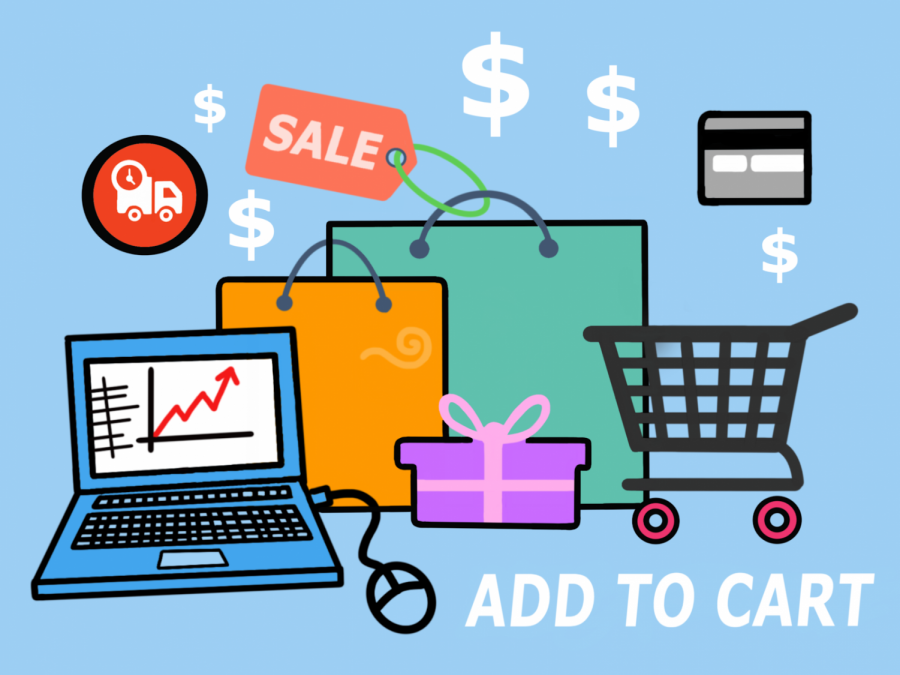AgentOps helps developers see inside their AI agents by logging every prompt, action, and cost. This review explains how it works, its features, setup, and why it’s becoming the go-to debugging tool for AI developers.
What is Ecommerce and How Is It The Future of Retail?

E-commerce, short for electronic commerce, is like a bustling digital marketplace where buying and selling happen at the click of a button. According to Investopedia, this online shopping phenomenon has roots stretching back to the 1960s, evolving from simple electronic data exchanges to the global retail powerhouses we know today, such as Amazon and Alibaba.
Overview Of Ecommerce

retaildogma.com
E-commerce is like a virtual shopping mall where you can buy and sell goods and services without leaving your couch. It's the digital equivalent of a bustling marketplace, where transactions happen through websites, mobile apps, and online platforms 1.
Imagine browsing through endless aisles of products, adding items to your digital cart, and completing your purchase with a few taps on your smartphone – that's e-commerce in action. Popular platforms like Amazon serve as massive online bazaars, while tools like Shopify empower businesses to set up their own digital storefronts 2. The process typically involves:
- Customers browsing products on a website or app
- Adding items to a virtual shopping cart
- Securely entering payment information
- Receiving order confirmation and tracking details
- Businesses fulfilling orders and shipping products 3
This digital revolution has transformed how we shop, offering convenience, global reach, and 24/7 accessibility for both consumers and businesses alike 4.
Early Days to Now

E-commerce's journey began long before the internet as we know it today. In 1971, students at Stanford used the ARPANET (the internet's precursor) to arrange a marijuana sale, marking the first online transaction 1.
However, the modern e-commerce era kicked off in 1994 with the first secure online purchase - a Sting CD sold on NetMarket 2. Since then, e-commerce has exploded, with key milestones including:
- 1995: Amazon sells its first book, reaching customers in 50 states and 45 countries within months
- Late 1990s: Rise of online marketplaces like eBay, introducing user reviews and personalized recommendations 3
- 2000s: Mobile commerce emerges with smartphones, enabling shopping on-the-go
- 2010s: Social commerce takes off, allowing purchases directly through social media platforms
Today, e-commerce continues to evolve with trends like voice shopping, augmented reality for virtual try-ons, and AI-powered personalization shaping the future of online retail 4 5.
Types of Online Selling

shopify.com
E-commerce comes in various flavors, each catering to different types of transactions and relationships. Imagine a digital playground where businesses and consumers interact in different ways:
- B2B (Business-to-Business): Think of this as a wholesale club for companies. Businesses sell products or services to other businesses, like HubSpot providing software to marketing teams 1.
- B2C (Business-to-Consumer): This is the digital version of your local mall. Companies like Amazon sell directly to shoppers, offering everything from books to gadgets 2.
- C2C (Consumer-to-Consumer): Picture a virtual garage sale. Platforms like eBay allow individuals to buy and sell items directly to each other 3.
- C2B (Consumer-to-Business): In this reverse model, individuals offer services to businesses. For example, freelance designers creating logos for companies on platforms like Fiverr 4.
Each model has its unique characteristics, but they all contribute to the bustling ecosystem of online commerce, transforming how we buy, sell, and interact in the digital age.
Perks of Online Shopping

rootnutritionrd.com
E-commerce is like a magic wand for both shoppers and sellers, offering a world of benefits. For consumers, it's like having a 24/7 personal shopper at their fingertips, allowing them to browse and buy from the comfort of their couch at any time 1.
Businesses, on the other hand, can set up shop in a global marketplace, reaching customers far beyond their local street corner 2. This digital storefront is often more cost-effective than a physical one, saving on expenses like rent and in-store staff 3.
Plus, e-commerce is like having a crystal ball, using customer data to create personalized experiences. This data-driven approach helps businesses understand their customers better, offering tailored product recommendations and targeted marketing that can boost sales and customer loyalty 4 5.
Online Store Hurdles

Clark Street Mercantile - unsplash.com
E-commerce faces a gauntlet of challenges, much like a video game character navigating a treacherous level. Cybersecurity threats loom like digital monsters, with hackers using tricks like phishing and malware to steal sensitive data 1 2.
In the crowded online marketplace, standing out is as tough as finding Waldo in a sea of striped shirts 3. Supply chain hiccups can turn order fulfillment into a frustrating game of Tetris, with warehousing and shipping errors causing customer disappointment 4 5.
Winning customer trust and loyalty is the ultimate boss battle, requiring businesses to level up their personalization, loyalty programs, and customer service to keep players coming back for more 6 5. To survive and thrive, e-commerce businesses must constantly upgrade their defenses, innovate their strategies, and optimize their operations.
Ecommerce Tools

hookle.app - unsplash.com
Choosing the right e-commerce platform is like picking the perfect toolbox for your business. Each platform has unique features tailored to different needs, making it essential to match the tool to your goals.
- Shopify: Known for its simplicity and all-in-one capabilities, Shopify is ideal for beginners and businesses of all sizes. It offers a drag-and-drop store builder, built-in payment processing, and seamless multichannel selling. Shopify handles hosting and security, making it a hassle-free option for those who want to focus on growing their store.
- WooCommerce: A WordPress plugin, WooCommerce is perfect for those who value flexibility and customization. While it requires setting up hosting and plugins, it offers endless design options and advanced SEO tools. It's a great choice for tech-savvy users or businesses already familiar with WordPress.
- Magento (Adobe Commerce): Best suited for medium to large enterprises, Magento shines with its robust features and scalability. It allows extensive customization and supports complex needs like multi-store management and advanced analytics. However, it has a steep learning curve and requires technical expertise.
- BigCommerce: This platform combines ease of use with powerful tools for larger businesses. It supports advanced marketing features, international shipping, and even wholesale options. BigCommerce is a solid pick for enterprises looking to scale without sacrificing usability.
- Squarespace: With its sleek templates and beginner-friendly interface, Squarespace is ideal for creatives or small businesses focused on aesthetics. While it lacks multichannel selling capabilities, it offers strong merchandising tools and integrates with Square for in-person payments.
Each platform caters to different business models and technical skills, so understanding your priorities—whether it's ease of use, customization, or scalability—will help you make the best choice for your e-commerce journey.
The Future Of Ecommerce

globalbrandsmagazine...
The future of e-commerce is like a sci-fi movie coming to life. Artificial Intelligence (AI) is becoming the ultimate shopping assistant, personalizing your experience and predicting what you'll want before you even know it 1. Augmented Reality (AR) and Virtual Reality (VR) are turning online shopping into a 3D adventure, letting you try on clothes or see how furniture looks in your home without leaving your couch 2.
Blockchain is the new sheriff in town, making transactions more secure and transparent 2. Mobile commerce is skyrocketing, with voice shopping expected to grow by a whopping 54.63% in 2024 3.
Meanwhile, eco-friendly practices are becoming the cool kids of e-commerce, with 93% of consumers considering a brand's climate contribution when making a purchase 4. From carbon offsetting to sustainable packaging, online shopping is going green faster than you can say "add to cart" 4.
Starting Your Online Store

alidropship.com
Starting an e-commerce business is like building a digital lemonade stand, but instead of a neighborhood corner, you're setting up shop in the vast online marketplace. Here's a step-by-step guide to get your virtual storefront up and running:
- Choose your niche: Think of this as picking your secret lemonade recipe. Find a product or service you're passionate about and that fills a gap in the market. Research trends and analyze competition to ensure there's demand for your offering.
- Select an e-commerce platform: This is like choosing the foundation for your lemonade stand. Popular options include Shopify, WooCommerce, and Squarespace. Each has its strengths, so pick one that aligns with your technical skills and business needs.
- Develop your website: Design your digital storefront to be as inviting as a cool glass of lemonade on a hot day. Ensure it's user-friendly, mobile-responsive, and showcases your products effectively. Remember, you have less than half a second to make a good first impression.
- Set up payment gateways: Make it easy for customers to pay you, just like accepting both quarters and dollar bills at your lemonade stand. Integrate secure payment options like PayPal, Stripe, or Square to build trust with your customers.
- Source your products: Whether you're making your own lemonade or buying it wholesale, ensure you have reliable suppliers. Consider dropshipping if you don't want to manage inventory yourself.
- Plan your fulfillment strategy: Decide how you'll get your "lemonade" to customers. Will you handle shipping yourself or use a fulfillment service? Research shipping rates and consider offering free shipping to stay competitive.
- Market your store: Spread the word about your amazing lemonade! Use a mix of SEO, content marketing, social media, and email campaigns to attract customers. Consider influencer partnerships to expand your reach.
- Optimize for search engines: Just like putting up eye-catching signs for your lemonade stand, use SEO to make your store visible in search results. Create engaging content and use relevant keywords to improve your rankings.
- Provide excellent customer service: Treat your online customers like neighbors stopping by your lemonade stand. Offer responsive support, easy returns, and consider adding live chat to your site3.
- Analyze and adapt: Keep track of what's working and what isn't. Use tools like Google Analytics to monitor your store's performance and make data-driven decisions to improve.
Remember, success in e-commerce is like perfecting your lemonade recipe – it takes time, experimentation, and a willingness to adapt. Stay patient, keep learning, and don't be afraid to pivot if something isn't working. With persistence and the right strategy, your digital lemonade stand can become the talk of the online neighborhood.
Common Ecommerce Questions

chatwith.tools
E-commerce and traditional commerce differ mainly in their physical presence and accessibility. While traditional stores require a brick-and-mortar location, e-commerce operates entirely online, allowing 24/7 global access 1 2.
Starting an e-commerce business can be surprisingly affordable, with costs ranging from $500 to $1,000 for a basic setup 3. However, to thrive with proper marketing and advertising, you might need to invest between $12,479 and $39,800 3. To ensure your online store's security, implement these key measures:
- Choose a secure e-commerce platform
- Use data encryption and HTTPS
- Implement strong password policies
- Regularly update your system
- Educate employees about cybersecurity
- Utilize website monitoring tools
Remember, while e-commerce offers vast opportunities, it also comes with unique challenges like cybersecurity risks and intense competition. Stay informed and adaptable to navigate these digital waters successfully.
Dropshipping Vs Ecommerce, Are They One In The Same?

Imagine e-commerce as owning a traditional brick-and-mortar store, while dropshipping is like running a store without ever touching the products. In e-commerce, you're the shopkeeper who buys inventory, manages stock, and ships orders.
With dropshipping, you're more of a middleman, connecting customers with suppliers who handle the inventory and shipping. Dropshipping offers lower startup costs and less risk, making it easier for beginners to enter the market 1. However, e-commerce typically provides higher profit margins and more control over the customer experience 2.
While dropshipping allows for a wider product range with minimal investment, e-commerce gives you the power to build a unique brand and customize your offerings 3. Both models have their place in the online retail world, with the choice depending on your goals, resources, and willingness to manage inventory and logistics.
Boosting Your Online Store

Marketing your e-commerce store is like setting up a series of digital billboards and neon signs to attract customers to your online shop. Here's a quick guide to some key strategies:
- SEO: Think of this as making your store easy to find on the internet highway. Use relevant keywords in your product descriptions and metadata1, and ensure your site loads quickly and works well on mobile devices.
- Content Marketing: This is like hosting fun events at your store. Create blog posts, videos, or user-generated content that entertains and informs your potential customers.
- Social Media: Imagine this as setting up mini-stores on popular hangout spots. Use platforms like Instagram, TikTok, and Facebook to showcase your products and engage with customers.
- Paid Advertising: This is like buying prime advertising space. Use PPC ads and retargeting to reach potential customers who've shown interest in your products.
- Email Marketing: Think of this as sending personalized invitations to your store. Use automation to send targeted messages based on customer behavior.
- Influencer Marketing: This is like getting popular kids to wear your brand. Partner with influencers who align with your brand to reach new audiences.
- Conversion Rate Optimization: This is like rearranging your store layout for better flow. Use A/B testing to improve your website's user experience and increase sales.
Remember, the key is to mix and match these strategies to create a marketing cocktail that best suits your unique e-commerce flavor.
Social Shopping Revolution

thesciencesurvey.com
Social commerce is transforming online shopping into a fun, interactive experience. Platforms like TikTok, Instagram, and Facebook now let you shop while scrolling through your feed, turning social media into virtual malls. TikTok Shop, for instance, is expected to sell about $8 billion worth of goods in 2024 1.
These platforms make it easy to see a product you like and buy it instantly, without leaving the app. Livestream shopping, which is huge in China, is catching on globally. It's like a modern version of TV shopping channels, but way more engaging.
In China, this market is expected to hit $4.9 trillion by 2023 2. The U.S. is catching up, with livestream shopping projected to reach $55 billion by 2026 2. Influencers play a big role in this trend, acting like digital salespeople.
They showcase products in real-time, answer questions, and create a sense of urgency that drives sales. In fact, 30% of U.S. social media users have bought something after seeing an influencer post about it 3. This blend of entertainment, social interaction, and shopping is reshaping how we buy online, making it more immediate and personal than ever before.
AI Helps Online Stores

newgenmax.com
AI and automation are transforming e-commerce like a high-tech makeover, making online shopping smarter and more personalized. AI-powered chatbots are like tireless digital sales assistants, available 24/7 to answer customer queries and provide support. These chatbots can handle up to 40% of support tickets for large Shopify businesses, freeing up human staff for more complex issues 1.
AI-driven product recommendations act as a personal shopper, analyzing customer behavior to suggest items they're likely to love. These systems adapt in real-time based on customer interactions, ensuring recommendations stay relevant and engaging 2.
For example, if someone shows interest in skincare moisturizers, the AI will start suggesting more products from that category. Voice search optimization is becoming crucial as more people use voice assistants like Alexa and Google Assistant for shopping.
To optimize for voice search, businesses need to focus on natural language keywords and local SEO, as many voice searches have local intent 3. For instance, a coffee shop might optimize for queries like "Where's the best latte near me?"
Automated email marketing is like having a super-efficient personal assistant who never forgets to follow up. These systems can send targeted messages based on customer behavior, such as reminding shoppers about items left in their cart or sending personalized product recommendations. This automation helps recover potentially lost sales and keeps customers engaged with your brand 4.
By leveraging these AI and automation tools, e-commerce businesses can provide more personalized experiences, increase efficiency, and ultimately drive more sales in the competitive online marketplace.
Protecting Online Shoppers

pcmag.com
E-commerce security is like building a digital fortress to protect your online store and customers. To guard against fraud, businesses use advanced tools that act like vigilant sentinels, monitoring transactions for suspicious activity. For instance, they might flag orders with mismatched billing and shipping addresses or unusually large purchases 1.
Multi-factor authentication (MFA) serves as an extra layer of defense, requiring users to prove their identity through multiple methods. This could involve entering a password and then confirming a code sent to their phone, making it much harder for fraudsters to break in 2.
Secure payment processing, using encryption and tokenization, works like an invisible shield, protecting sensitive data as it travels across the internet 3.
To safeguard customer data, e-commerce businesses follow best practices such as:
- Implementing robust data governance frameworks
- Encrypting data both in transit and at rest
- Conducting regular security audits
- Training employees on cybersecurity best practices
- Using secure, PCI-compliant payment gateways45
By adopting these measures, online stores can significantly reduce the risk of fraud and data breaches, building trust with customers and protecting their bottom line.
Conclusion
E-commerce has revolutionized the way we shop and do business, transforming the retail landscape into a global digital marketplace. As we look to the future, several key trends are shaping the industry:
- AI and automation are enhancing personalization and efficiency, with chatbots handling up to 40% of customer support tickets for large online stores1.
- Social commerce is booming, with platforms like TikTok Shop expected to sell about $8 billion worth of goods in 20242.
- Mobile commerce continues to grow, with sales projected to reach $3 trillion by 20251.
- Sustainability is becoming a major focus, as 93% of consumers consider a brand's climate impact when making purchases3.
While challenges like cybersecurity risks and intense competition remain, the future of e-commerce looks bright. As technology advances and consumer behaviors evolve, businesses that stay adaptable and embrace innovation will be best positioned to thrive in this dynamic digital ecosystem.

